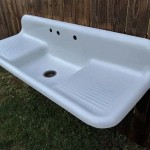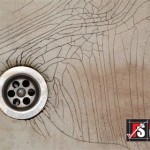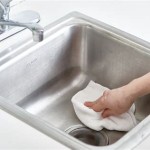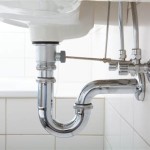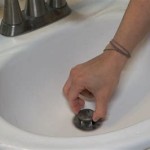Water Filtration Under Sink System: A Comprehensive Guide
The water we consume daily plays a vital role in our health and well-being. While municipal water supplies undergo treatment processes, contaminants can still find their way into our tap water through aging infrastructure, industrial pollutants, and agricultural runoff. This has led to an increased interest in point-of-use (POU) water filtration systems, particularly under-sink models, which offer a convenient and effective way to improve water quality at the point of consumption. These systems are installed beneath the kitchen sink, providing filtered water directly from a dedicated faucet. This article will delve into the intricacies of under-sink water filtration systems, exploring their benefits, types, installation process, maintenance requirements, and factors to consider when selecting the right system for your needs.
Under-sink water filtration systems offer several advantages over other filtration methods: improved water quality, dedicated faucet convenience, space-saving design, and cost-effectiveness in the long run. These systems can remove or reduce a wide range of contaminants, including sediment, chlorine, lead, bacteria, viruses, and dissolved solids, depending on the specific filters used. The dedicated faucet eliminates the need to filter all of your household water, providing filtered water only when required for drinking, cooking, or other specific purposes. The under-sink installation preserves counter space and integrates seamlessly into the kitchen design. While the initial investment may be higher than some other filtration options, the long-term cost per gallon of filtered water is typically lower.
Enhanced Water Quality Through Multi-Stage Filtration
The efficacy of an under-sink water filtration system lies in its multi-stage filtration process. Most systems employ a series of filters, each targeting specific contaminants. A typical setup includes a sediment filter, a carbon filter, and sometimes specialized filters for specific contaminants like lead or fluoride. The sediment filter removes particulate matter, such as dirt, rust, and sand, which can clog other filters and affect the taste and appearance of water. The carbon filter, usually made of activated carbon, adsorbs chlorine, chloramine, and other organic compounds that contribute to unpleasant tastes and odors. More advanced systems may include reverse osmosis (RO) membranes, which are highly effective at removing dissolved solids, heavy metals, and microorganisms.
The specific types of filters used in an under-sink system will depend on the water quality in your area and the contaminants you wish to remove. It is crucial to understand your local water quality report, often available from your municipality, to identify the contaminants of concern. This information will help you choose a system with the appropriate filter media to address those specific issues. For example, if lead is a concern, a filter certified to NSF/ANSI Standard 53 for lead reduction is essential. Similarly, if you are concerned about bacteria and viruses, a system with a UV sterilizer or an ultrafiltration (UF) membrane may be necessary.
The effectiveness of each filter decreases over time as it becomes saturated with contaminants. Therefore, regular filter replacement is crucial to maintain optimal water quality. The recommended replacement frequency varies depending on the type of filter and the volume of water filtered. Some systems have built-in indicators that alert you when a filter needs replacing, while others rely on a schedule based on the manufacturer's recommendations.
Regularly monitoring the water quality coming from your filtration system is also beneficial. This can be done through periodic testing using a water quality testing kit or by sending a sample to a certified laboratory. This practice ensures that the system is functioning properly and effectively removing the intended contaminants.
Installation and Space Considerations for Under Sink Systems
Installing an under-sink water filtration system typically involves connecting the system to your cold water line and installing a dedicated faucet. The process usually requires basic plumbing skills and tools, such as a pipe cutter, adjustable wrench, and Teflon tape. However, if you are not comfortable with plumbing work, it is advisable to hire a professional plumber for the installation.
The installation process generally follows these steps: first, shut off the cold water supply to the sink. Disconnect the existing cold water line from the faucet. Install a T-fitting to the cold water line, allowing you to connect the filtration system. Connect the filtration system's inlet hose to the T-fitting. Drill a hole in the sink or countertop for the dedicated faucet. Install the faucet and connect it to the filtration system's outlet hose. Turn on the cold water supply and check for leaks. Flush the system according to the manufacturer's instructions before using the filtered water.
Space is a critical consideration when choosing an under-sink water filtration system. The system must fit comfortably under your sink alongside existing plumbing and other items stored there. Before purchasing a system, measure the available space to ensure that the system will fit. Some systems are more compact than others, making them better suited for smaller spaces. Also, consider the ease of access to the filters for replacement. Choose a system that allows for easy filter changes without requiring extensive disassembly.
The location of the dedicated faucet is another factor to consider. You will need to drill a hole in your sink or countertop to accommodate the faucet. Ensure that you have enough space and clearance for the faucet and that it is positioned conveniently for filling glasses and pitchers. Some systems come with a variety of faucet styles and finishes to match your existing kitchen decor.
Maintenance and Long-Term Cost of Ownership
Maintaining an under-sink water filtration system is essential for ensuring its longevity and effectiveness. The primary maintenance task is regular filter replacement. The frequency of filter replacement depends on the type of filter and the amount of water filtered. Refer to the manufacturer's instructions for specific recommendations. Using filters that are not specifically designed for your filtration system may compromise its performance and potentially damage the system.
In addition to filter replacement, periodically inspect the system for leaks or damage. Check the hoses, fittings, and housings for any signs of wear or deterioration. Tighten any loose connections and replace any damaged parts. Sanitizing the system periodically can also help prevent the growth of bacteria and other microorganisms. Follow the manufacturer's instructions for sanitizing procedures. This typically involves flushing the system with a diluted bleach solution and then thoroughly rinsing with clean water.
The long-term cost of ownership of an under-sink water filtration system includes the initial purchase price, the cost of replacement filters, and the cost of any repairs or maintenance. While the initial investment may be higher than some other filtration options, the long-term cost per gallon of filtered water is often lower. Consider the cost of replacement filters when comparing different systems. Some systems use proprietary filters that are more expensive than generic filters. Also, factor in the cost of any professional installation or maintenance services you may require.
Choosing a system with a longer filter lifespan can help reduce the frequency of filter replacements and lower the overall cost of ownership. However, it is essential to ensure that the longer-lasting filters are still effective at removing the contaminants of concern in your water. Look for systems that offer a combination of performance, convenience, and cost-effectiveness.
Under Sink Water Filters Are They A Good Investment Paragon Systems
3 Stage Under Counter Direct Connect Filtration System Waterdrop Tsa
Ultraflo Under The Sink Water Filtration Kit
Whole House Vs Under Sink Filters
Under Sink Filtration Systems Pentair Water Solutions
A Guide To Under Sink Water Filtration Systems Culligan
Installing An Under Sink Water Filter Fine Homebuilding
3 8 Quick Change 1 Stage Under Sink Water Filter System Nu Aqua
Apex 50 5 Stage Reverse Osmosis Water Filter System
Apec Water Systems Cs Series High Capacity Under Counter Filtration System With Scale Inhibitor 2500p The Home


